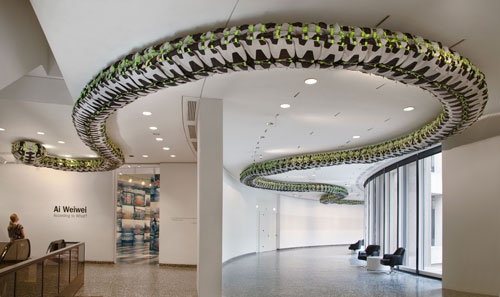It is interesting to think about the other things artists are known for besides their art. Ai Weiwei, a Chinese artist, is also an architect and activist. He has been famous for speaking out against China’s repressive regime. Ai Weiwei started a critical blog in 2006 that was shut down in 2009 by Chinese authorities. He was in conflict with the Chinese government many times, including being beaten by the police in 2009 and being imprisoned for 81 days in 2011. He has characterized his meddling with the Chinese government as a kind of performance art.
Ai Weiwei was in Beijing before he went to New York in 1981 and lived in East Village. There were protests of housing rights, which added to his political awareness. He attended the Parsons School of design, where he took thousands of photographs. The pictures show him to be an ambitious person who was aiming for something. He returned to China in 1993 and also took a lot of pictures of the neighborhood in Beijing that called itself the East Village. At that time, he mainly used his camera as his artistic tool.
Ai Weiwei’s activism can be seen through his art, which are in a gallery that was recently opened. The exhibition is in Hirshhorn Museum, located in Washington, and it is called “Ai Weiwei: According to What?” The Hirshhorn show classifies Mr. Ai as “one of China’s most prolific and provocative contemporary artists”. He makes great art and makes great use of it as a public intellectual and social conscience. Of the many pictures he took in New York, about 100 of them are in the exhibition, which show his friends, demonstrations, and random incidents on the street.
The exhibit in Hirshhorn museum shows how irrational life is under totalitarianism through sculptures and pieces from the last decade. They follow the tradition of the Duchamp ready-made, where objects are modified that then become art.
Many works have a background that need to be read or known beforehand in order to understand the origin behind the work. For example, “Kippe” is a large block made of scraps of lustrous wood that are actually from dismantled Qing dynasty temples. Another piece is a large snake coiled on the ceiling made up of backpacks that represent the thousands of children that died during the 2008 Sichuan earthquake. Ai Weiwei wanted an investigation about that because it caused poorly built schools to collapse while surrounding buildings survived.

There is always a history to an art, which adds value to it and can enhance the meaning. Is art more meaningful or ‘better’ if it contains a historical or controversial event? Do you prefer if an art piece didn’t have a specific origin or history to link the meaning to? Do you prefer paintings or sculptures? I have no preference between the two. I find Ai Weiwei’s art to be very significant to current events in China, which adds to its value. An artist’s history should never be ignored when analyzing art, since it influences his or her art, with respect to the type, content, and meaning.
The Hirshhorn show will travel to the Brooklyn Museum in April 2014, which I would be willing to check out, after I looked at some of the pictures. Maybe other people will find it interesting too.



